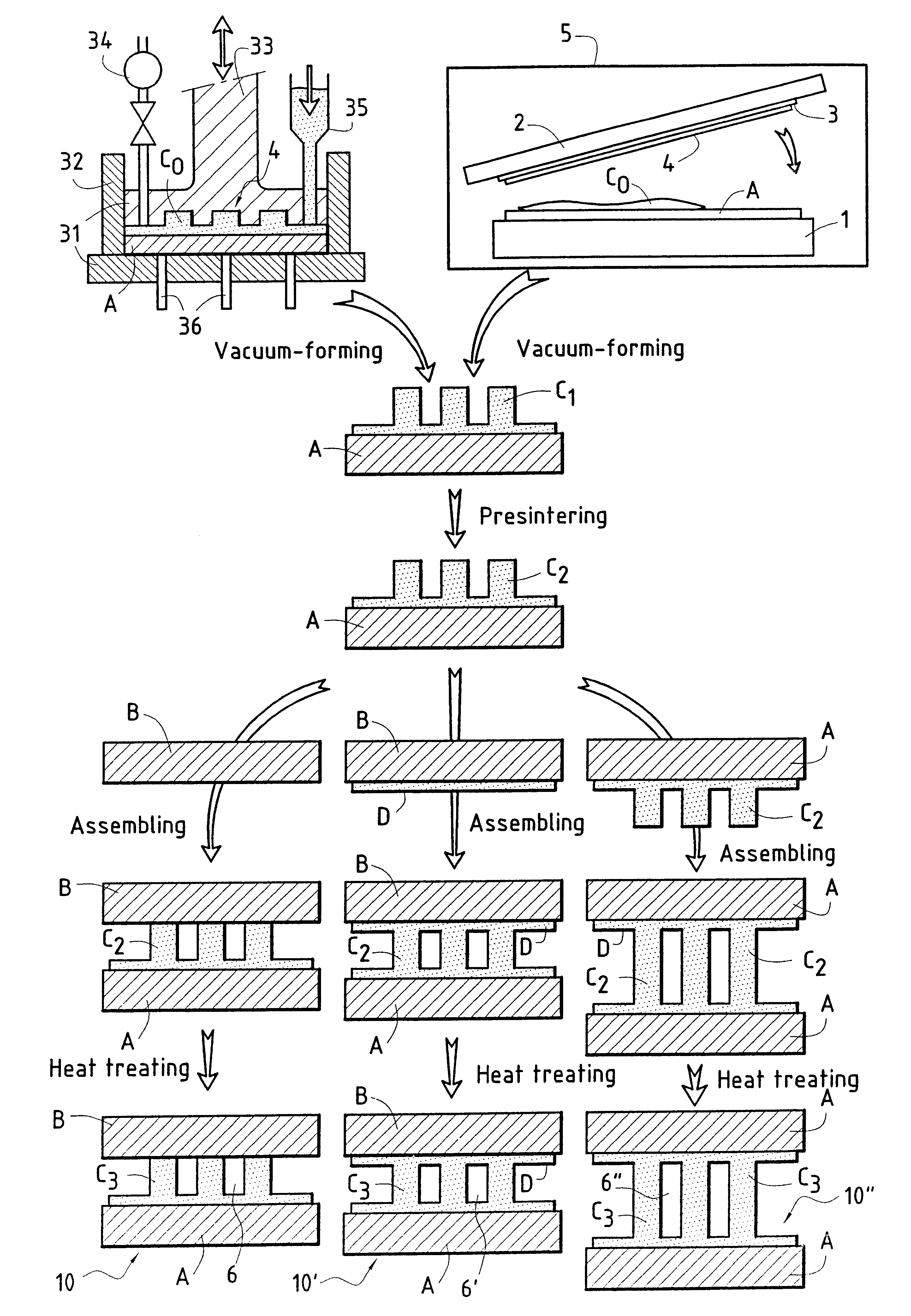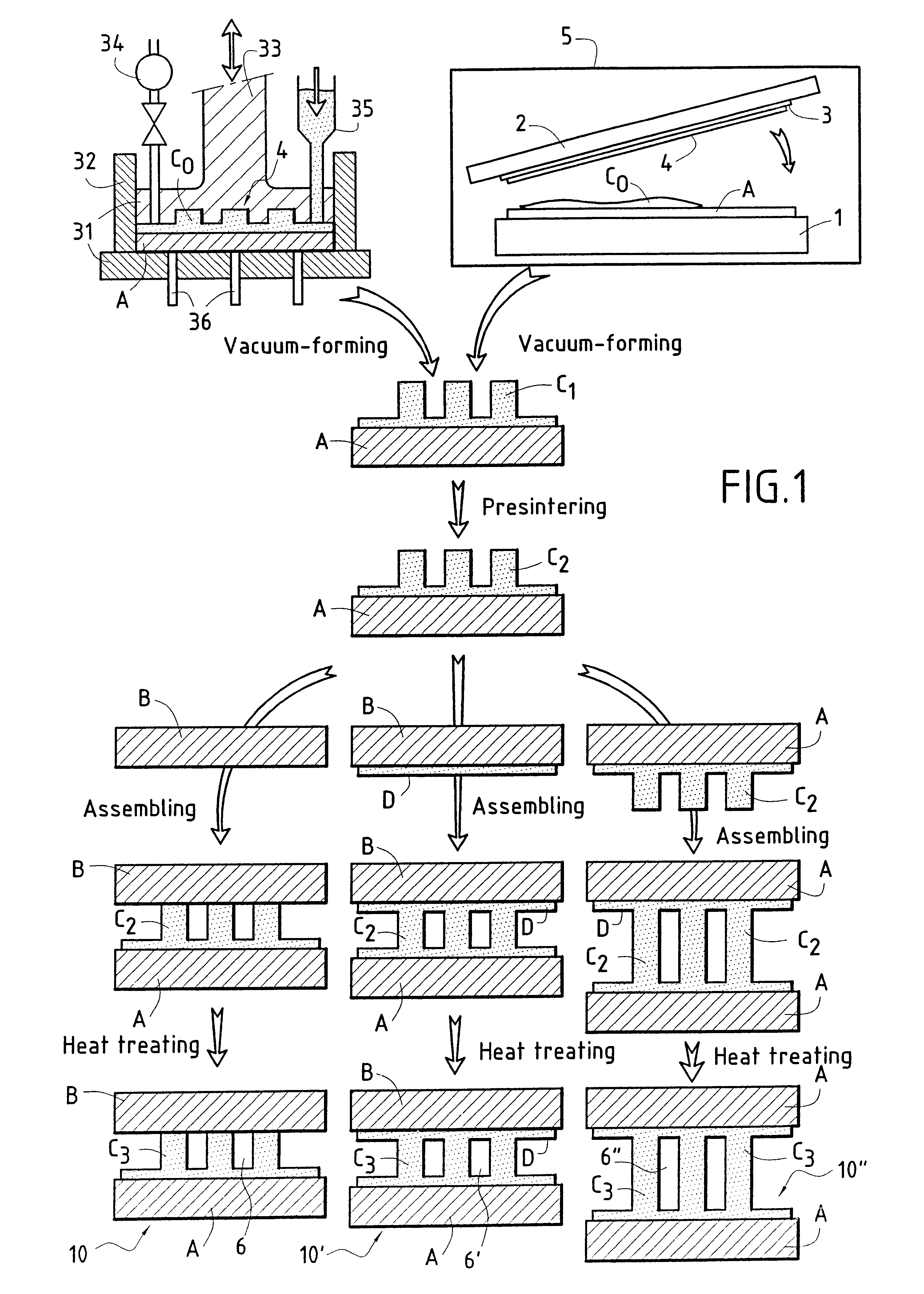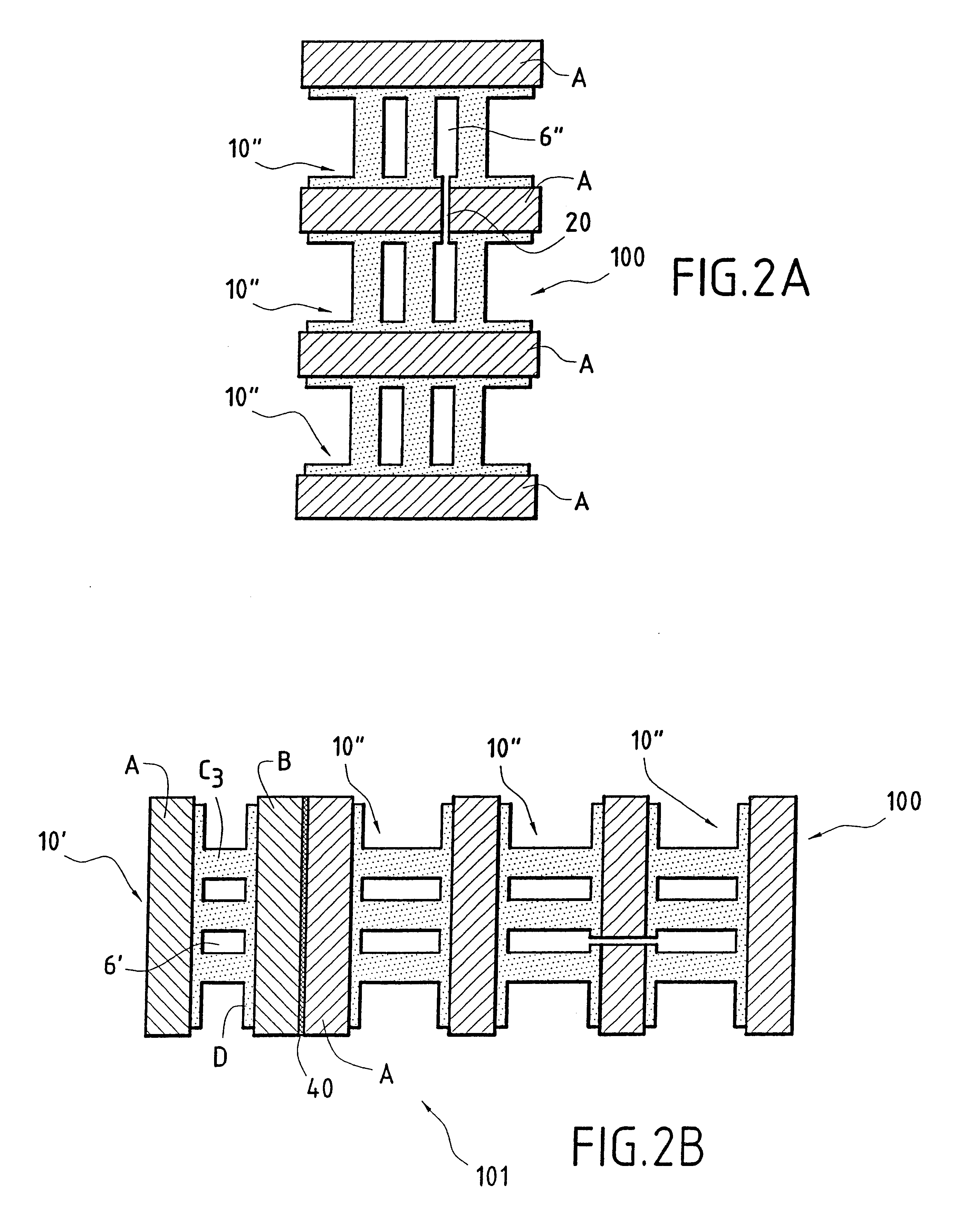Microfluidic device and manufacture thereof
a microfluidic device and microfluidic technology, applied in the field of microreactors, can solve the problems of high cost of silicon devices, difficult control of surface states effectively within such structures, and inability to withstand temperatures of more than 200.degree. c. to 300.degree. c. over a prolonged period
- Summary
- Abstract
- Description
- Claims
- Application Information
AI Technical Summary
Benefits of technology
Problems solved by technology
Method used
Image
Examples
Embodiment Construction
The invention is illustrated by the following example:
Microreactors of the 10' type (as shown diagrammatically in FIG. 4) were made using a baseplate of alkali-lime type glass on which electrodes were deposited (which electrodes can be used for local heating, for temperature control, or as probes). The thickness of the first substrate should be at least 200 .mu.m, and should generally lie in the range of about 200 .mu.m to about 3 millimeters (mm). Structures in relief were formed on the glass plate by microforming glass, the structures having a width Iying in the range of about 100 .mu.m to about 300 .mu.m and a height of up to approximately 800 .mu.m; the widths of the resulting capillaries (i.e. recesses) lay in the range of about 50 .mu.m to more than about 1000 .mu.m. Passages were drilled in the appropriate locations to put recesses of the device into communication with the outside. Thereafter, a cover plate of alkali-lime glass was put into place on the drilled glass plate (t...
PUM
| Property | Measurement | Unit |
|---|---|---|
| temperatures | aaaaa | aaaaa |
| aspect ratios | aaaaa | aaaaa |
| aspect ratios | aaaaa | aaaaa |
Abstract
Description
Claims
Application Information
 Login to View More
Login to View More - R&D
- Intellectual Property
- Life Sciences
- Materials
- Tech Scout
- Unparalleled Data Quality
- Higher Quality Content
- 60% Fewer Hallucinations
Browse by: Latest US Patents, China's latest patents, Technical Efficacy Thesaurus, Application Domain, Technology Topic, Popular Technical Reports.
© 2025 PatSnap. All rights reserved.Legal|Privacy policy|Modern Slavery Act Transparency Statement|Sitemap|About US| Contact US: help@patsnap.com



